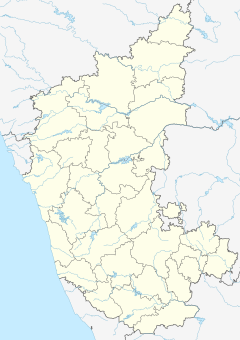| Nagesvara and Cennakesava temples pair | |
|---|---|
 | |
| Religion | |
| Affiliation | Hinduism |
| District | Hassan |
| Deity | Shiva, Vishnu |
| Location | |
| Location | Mosale village |
| State | Karnataka |
| Country | India |
| Geographic coordinates | 12°54′06.0″N 76°08′31.7″E / 12.901667°N 76.142139°E |
| Architecture | |
| Type | Hoysala |
| Creator | unknown |
| Completed | unknown, c. 1200 CE |
The Nageshvara-Chennakeshava temple complex, sometimes referred to as the Nagesvara and Chennakesava temples of Mosale, are a pair of nearly identical Hindu temples in the village of Mosale near Hassan city, Karnataka, India. One for Shiva, other for Vishnu, this pair is a set of highly ornamented stone temples, illustrating the Hoysala architecture. These temples also include panels of artwork related to the goddess tradition of Hinduism (Shaktism) and Vedic deities. Another notable feature of these temples is the artwork in their ceilings, how the shilpins (artisans) integrated the historic pre-Hoysala architectural innovations from the Chalukya era. Further, the temples include north Indian Bhumija and south Indian Vesara aedicules on the outer walls above the panels.[1][2] It is unclear when this temple pair was built, but given the style and architectural innovations embedded therein, it was likely complete before 1250 CE.[2]
According to Dhaky – an architecture and history scholar, the interior of this temple pair is "gorgeously embellished" and the outer artwork is "handsomely decorated".[2] This temple complex is protected as a monument of national importance by the Archaeological Survey of India.[3]
- ^ Foekema (1996), pp81-82
- ^ a b c Madhusudan A. Dhaky; Michael Meister (1996). Encyclopaedia of Indian Temple Architecture, Volume 1 Part 3 South India Text & Plates. American Institute of Indian Studies. pp. 374–375. ISBN 978-81-86526-00-2.
- ^ "Alphabetical List of Monuments - Karnataka - Bangalore, Bangalore Circle, Karnataka". Archaeological Survey of India, Government of India. Indira Gandhi National Center for the Arts. Retrieved 10 August 2012.

